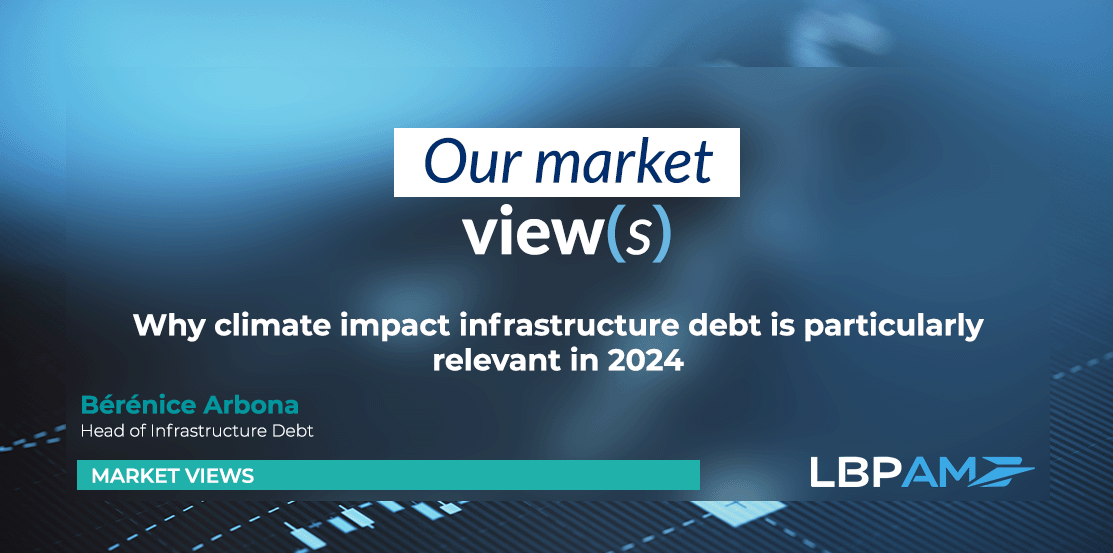Why climate impact infrastructure debt is particularly relevant in 2024
Link
Each month, LBP AM deciphers market news in video. Today, Bérénice Arbona, Head of Infrastructure Debt at LBP AM, explains why impact infrastructure debt is relevant at the start of 2024.
After the various headwinds of 2023, investors are now reassessing their investment strategies and are trying to find the best risk / reward investment opportunities. Our conviction is that Climate impact infrastructure debt is particularly relevant to fulfill the current investors’ needs. To understand why climate impact infrastructure debt is particularly relevant in today’s market configuration, let’s look at the main concerns of investors today. Today there are three main concerns.
Resilience : the first main concern
Investors want to invest in an asset class which can be resilient in the current macro-economic context. What’s the backdrop for 2024? Still high level of interest rates & high inflation, volatility in the liquid markets, increasing geopolitical tension and difficult macroeconomic environment.
Infrastructure debt is a defensive asset class which has proven its resilience and offers good protection against inflation, thanks to the essential nature of the assets that benefit from high barrier to entry and supportive regulatory framework. Cashflows of infrastructure assets are also less tied to economic cycles compared to other assets class.
Offering risk-adjusted profitability
The second main concern for investors is profitability, or rather risk-adjusted profitability. Investors want to invest in funds that offers a good risk adjusted profitability and low default rate.
Infrastructure debt offers today stable yields from 5 to 6% with no dependance on exit multiples. Our asset class has directly benefited from the increasing interest rate context, as it is a rate + spread market. The illiquidity or complexity premium is still attractive for asset managers that are able to capture the alpha of the private markets. The low default rate of the asset class has been proven during the covid crisis and the value of the security package enables infra debt to offers higher recovery rates compared to other asset classes.
Decarbonization and ESG : « cherry on the cake »
Third concern for investors, Decarbonization and ESG. Investors also want to invest in assets that can have a positive and measurable contribution to meet the energy transition and net zero challenges. Financial performance is a prerequisite but ESG and impact are cherry on the cake.
The massive investment needs to meet the climate change challenges offers massive and diversified investment opportunities in the infrastructure space. We do not only need to build new renewable energy capacities but we also need to finance new and innovative sectors such as hydrogen, batterie storage, energy efficiencies project. Track record and expertise of asset managers will be key to define financing structures in line with the risk profile of those assets. Experience in ESG analysis and ability to measure impact KPIs are also crucial to produce meaningful ESG reporting for investors.
Given investor focus on these three concerns, we believe that Climate impact infrastructure debt is truly relevant in today’s context.
